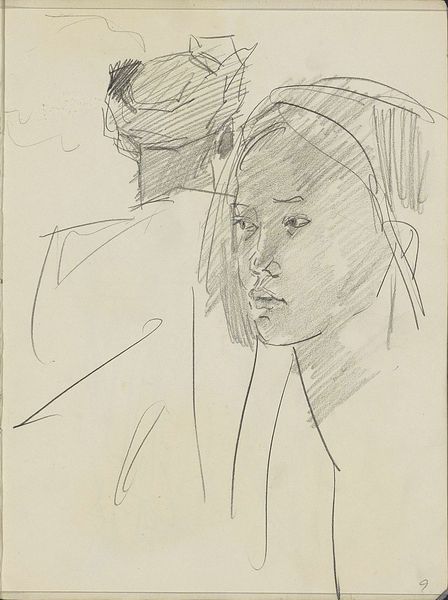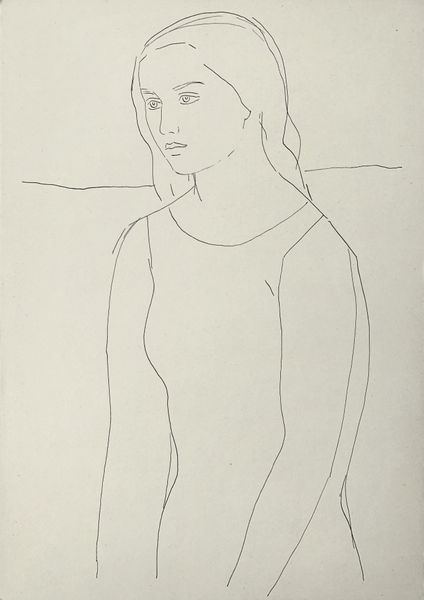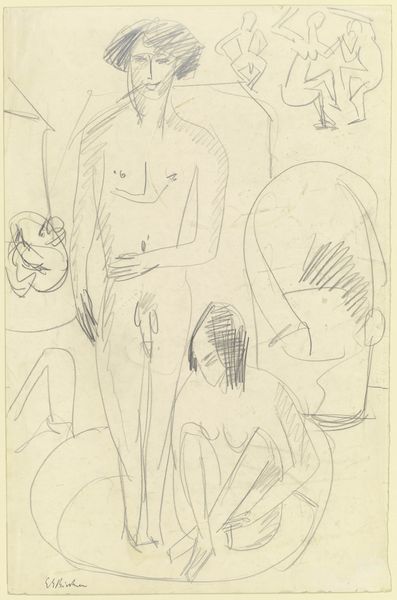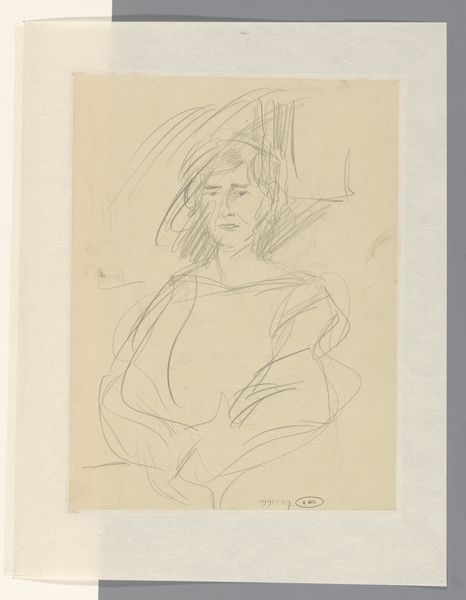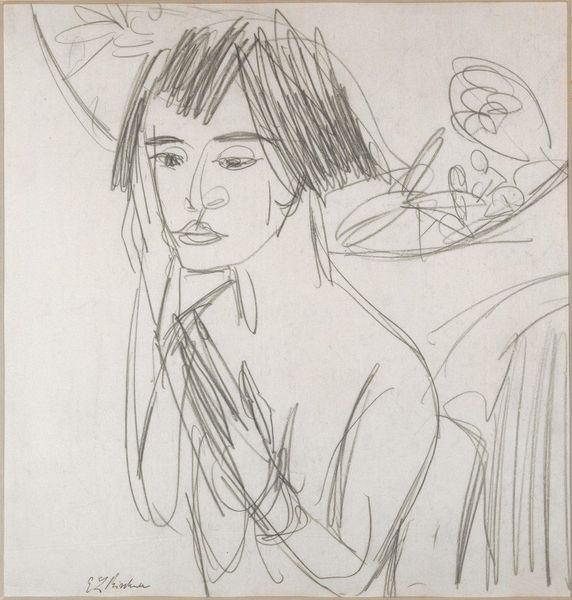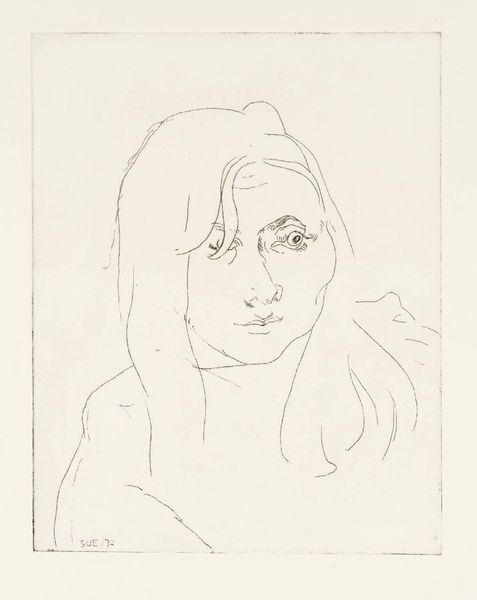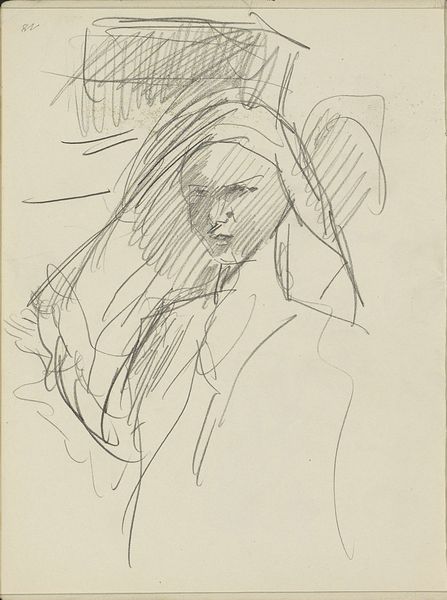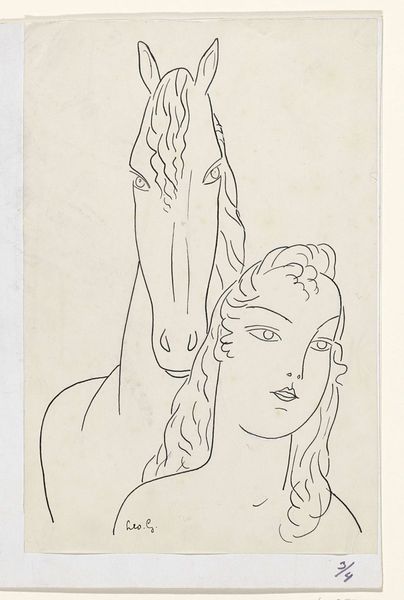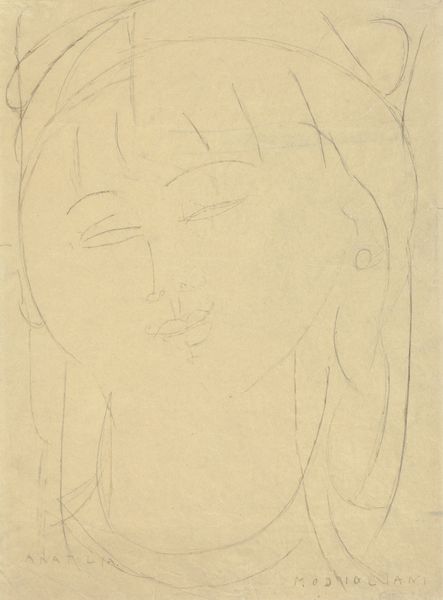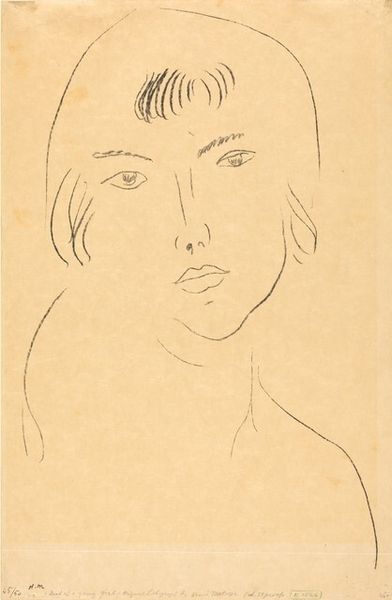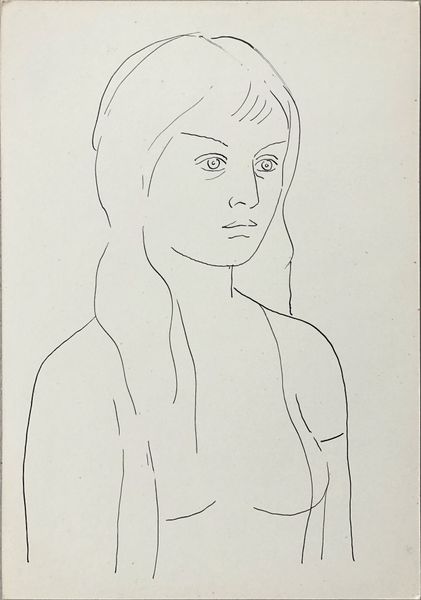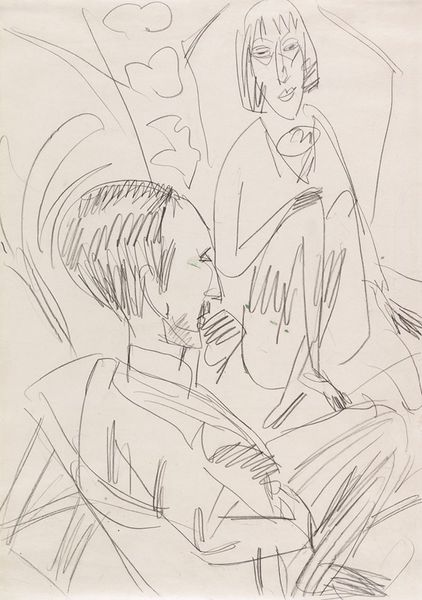
drawing, paper
#
portrait
#
17_20th-century
#
drawing
#
comic strip sketch
#
imaginative character sketch
#
facial expression drawing
#
light pencil work
#
caricature
#
cartoon sketch
#
paper
#
german
#
idea generation sketch
#
ink drawing experimentation
#
portrait drawing
#
cartoon style
Copyright: Public Domain
Editor: Here we have Ernst Ludwig Kirchner’s "Two Girls," a pencil drawing on paper from around 1912, housed at the Städel Museum. What strikes me first is how delicate the lines are, yet they convey such distinct personalities. What do you see in this piece that might not be immediately apparent? Curator: Let's look at how the artist uses line to construct form. Notice the angularity in the foreground figure’s face, how it contrasts with the softer, almost shadowed form of the girl behind. What is the impact of the repetition and direction of the individual pencil strokes themselves? Editor: Well, the varied pressure and direction give a sense of depth despite the limited shading. It's like he's using line not just to outline, but to sculpt. Does this emphasis on form over realism connect to broader artistic movements of the time? Curator: Precisely. Kirchner, aligned with Die Brücke, aimed to express inner emotions through distorted forms and non-naturalistic colors, even in drawing. But observe how, in this sketch, line becomes the primary vehicle for that emotional expression. Consider, then, what kind of emotional state that emphasis implies. Do you perceive tension? Anxiety? Editor: I think there is a sense of unease or alienation that is rendered not just through the girls' expressions, but with the sharp, almost fragmented lines themselves. This tension resonates strongly. Curator: Indeed. By focusing on the structural elements—the line, the form, the composition—we access a deeper understanding of the artist's intent and the work's emotional power. It really shows how much can be conveyed through formal elements, even without color or complex subject matter. Editor: Absolutely, this exploration has given me a fresh perspective on how to "read" a drawing and see the layers of meaning embedded in simple forms.
Comments
No comments
Be the first to comment and join the conversation on the ultimate creative platform.
